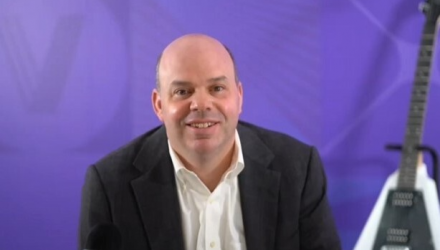The timing of the Fed’s potential next move was a hot topic during the VettaFi Fixed Income Symposium last week. Close to 600 live attendees, and many more via replay, heard from some of the smartest people in the fixed income ecosystem. We had 18 speakers across 16 asset management firms. VettaFi covered broad market topics like the outlook for interest rates as well as targeted ones like where to take on credit risk. The most common question asked of the panelists was, “How many rate cuts do you expect in 2024?”
Before hearing from the portfolio managers and other fixed income experts, we turned to the advisor community. While 70% expected between one and two rate cuts, more than one-quarter believe there will be no cuts in 2024. Almost no one believes the Fed will cut more than twice in 2024.
Fed Policy Will Be Different This Time
“I would say maybe one cut this year, if you forced me to put a number on it,” said Alex Obaza, portfolio manager of the T Rowe Price Ultra Short Bond ETF (TBUX). “I think the main point, as opposed to exactly when or how many cuts we get this year, is at the cutting cycle. Whenever it starts, it’s not going to mirror the hiking cycle we had in 2021 and 2022. It will be a lot more gradual and drawn out.”

Obaza helped kick off the three-hour virtual event in a panel discussion with Sonali Pier, portfolio manager of the PIMCO Multi-Sector Bond Active ETF (PYLD). “If inflation continues to surprise or be sticky, it’s possible we may even get a hike,” she said .
See related: ETF of the Week: PYLD
In mid-April, the Consumer Price Index (CPI) rose to 3.5% year over year. Before the news, the futures market was indicating most investors expected the Fed to restart its rate cutting program in June. However, following the CPI data, expectations for a reduction fell sharply, and the yield on the 10-year Treasury bond had its largest one-day jump in 19 months.
Looking to Credit
Later in the Fixed Income Symposium, the discussion continued about what to do if the Fed does not make any changes. “If we do not get any rate cuts, we continue to move in an environment where carry makes a lot of sense,” noted Matthew Wrzesniewsky, fixed income strategist at Goldman Sachs. Carry is the spread above the risk-free rate that corporate bonds offer.
“If the Fed does cut, the yield curve is likely to re-steepen,” Wrzesniewsky continued. “That’s where you want to look to exit your ultra short strategies and migrate a little bit more up the curve.
One of the short-term fixed income ETFs highlighted during the symposium was the Goldman Sachs Access Investment Grade Corporate 1-5 Year Bond ETF (GSIG). The fund takes a smart beta index approach to screen out issuers with weak fundamentals.
Pimco’s Pier agreed: “There are some parts of high-quality credit that look attractive. However, the dispersion across credit sectors highlights the need for active management.” Actively managed PYLD owns investment-grade, high yield credit, and securitized debt.
For more news, information, and analysis, visit VettaFi | ETF Trends.
